Pirates and, in general, all criminals, before attacking violently, the first step they took was to intimidate their prey. It is for this reason that, at the beginning of the eighteenth century, when a group of men repudiated all government and went to sea, they tended to choose large ships—although small ones were more useful to them, because of their speed—they covered their decks with dozens of cannons or hoisted the pirate flags that we easily recognize today. All this in pursuit of psychological warfare, if a ship surrendered without a fight, why have to spend gunpowder and bullets?
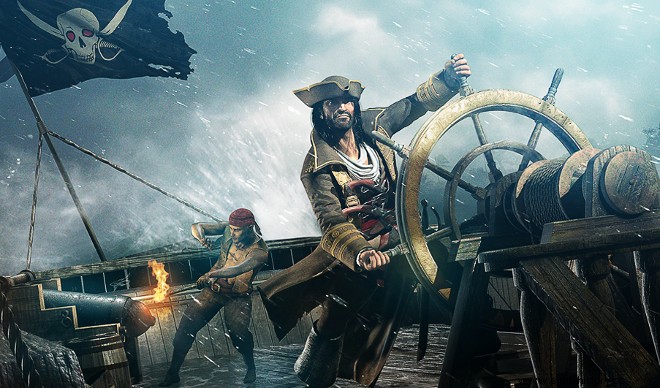
Despite the fact that today, after literature, cinema and the imaginary in general have been made with them, the flags that we identify as pirates are black with skulls and crossbones, in reality, originally, they were not they were like that At the end of the 17th century, the French filibusters began to use red flags, without any type of symbol, whose only meaning was that they would fight without quarter. Sometimes, in addition to being combined with the black ones, they included the drawing of a wild boar or a skull, implying that the prey had a reasonable time to surrender, before being attacked without any kind of respite. However, although these simple symbols have been used since the 16th century, the rise of the large black flags corresponded to the last years of piracy, coinciding with the time of characters such as Calico Jack , Bartholomew Roberts or Blackbeard .
These flags were popularly known as Jolly Roger , a term first used in 1724 in the book General history of the robberies and murders of the most famous pirates by Captain Johnson —possible pseudonym of the writer Daniel Defoe —, and whose origin is, even today, unknown, since some claim that it comes from the French expression joli rouge , in reference to the original red color, while others believe that it comes from the name of the Devil, Old Roger .
In the first twenty years of the 18th century, in which pirates fought against all ships flying the flag of any country, the classic red and black flags gained elements and details, becoming the coats of arms of all those that lacked king. To give rise to the universal symbol of piracy, the pirates nourished the flags with all kinds of objects, thus, in addition to skulls, they added crossbones, sabers -crossed and uncrossed-, pistols, hourglasses, harpoons, human figures , complete skeletons, as well as a long etcetera. The ship's flag became, for the captains, a blank canvas... or black.
Surely, the most common, especially because they are recognizable, are the classic ones with skulls and crossbones below, like those of Henry Every or Calico Jack . The first of them, on a black or red field, had a skull in profile, with a scarf and earring, above two crossbones. While Calico's, it was a skull from the front with two sabers crossed under it. Both cases were among those that most contributed to the popularization of the symbol that today represents pirates.
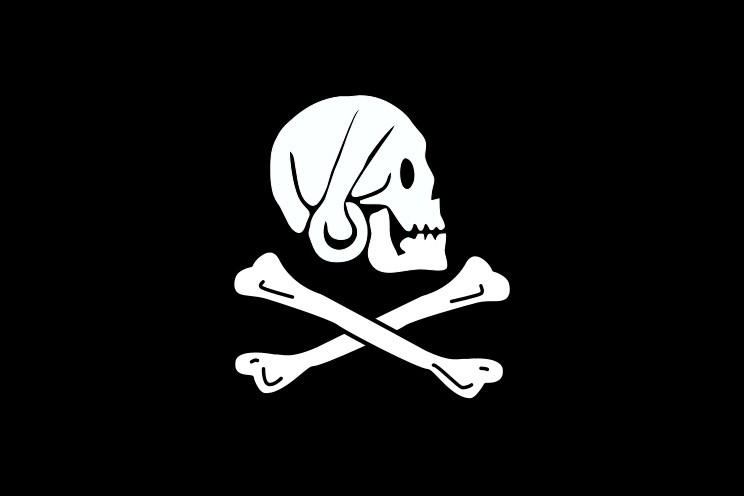
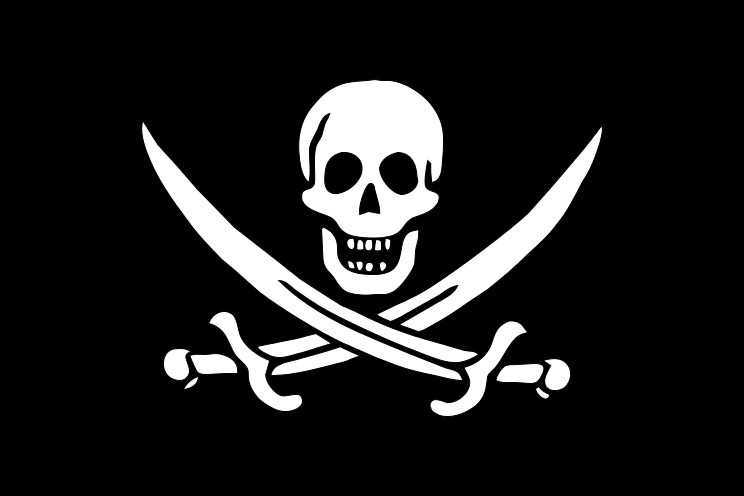
With a very similar base we find that of Stede Bonnet , a landed nobleman turned pirate who sailed alongside Blackbeard, and who chose a more particular design for his flag. On a black field, a skull appears in the center, with a bone floating below it, and is guarded by a dagger on the left and a heart on the right.
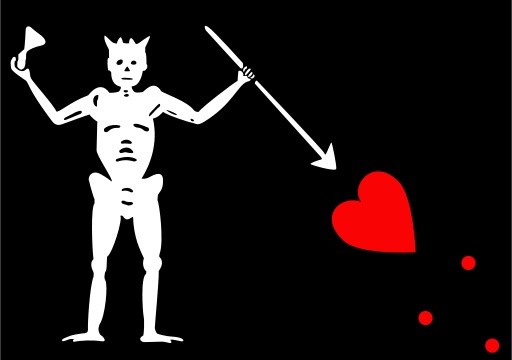
Bonnet's fellow sufferer, Blackbeard , he opted for a design more in keeping with all the spectacle with which he had surrounded himself to intimidate his prey. On black, a skeleton with horns appears, in whose right hand it holds an hourglass, while with the left it harpoons a bleeding red heart.

Perhaps one of the most creative was Christopher Moody , this pirate, who is remembered above all for his particular flag, hoisted a Jolly Roger on his ship red, which sported a white arm armed with a dagger in the center, a gold skull on two gold crossbones on the right, and a gold watch with black wings on the left, to symbolize that the time left to their victims it was rather short.
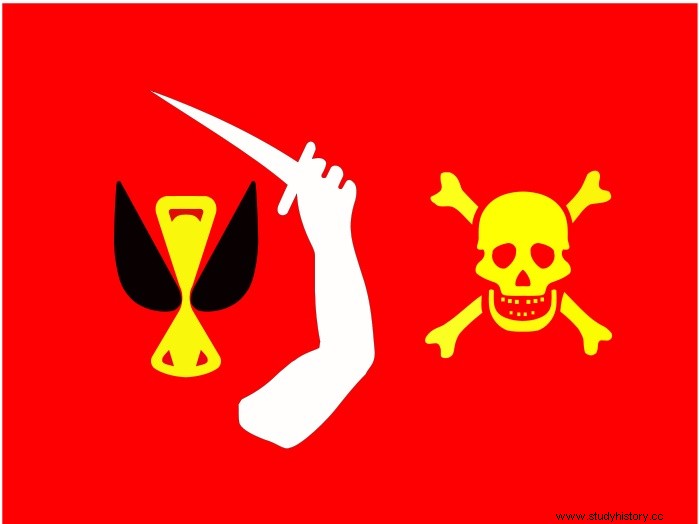
Finally, one of the most original, creative and personal pirate captains when designing his flag was Bartholomew Roberts . In it appeared the figure of an armed pirate —considered on several occasions as his own silhouette—, with his feet resting on two skulls, under which the acronym ABH could be read. and AMH respectively, which referred to the phrases «A Barbadian’s Head » and «A Martinican’s Head », symbolizing the skulls of the governors of Barbados and Martinique, to whom Roberts professed a true hatred.
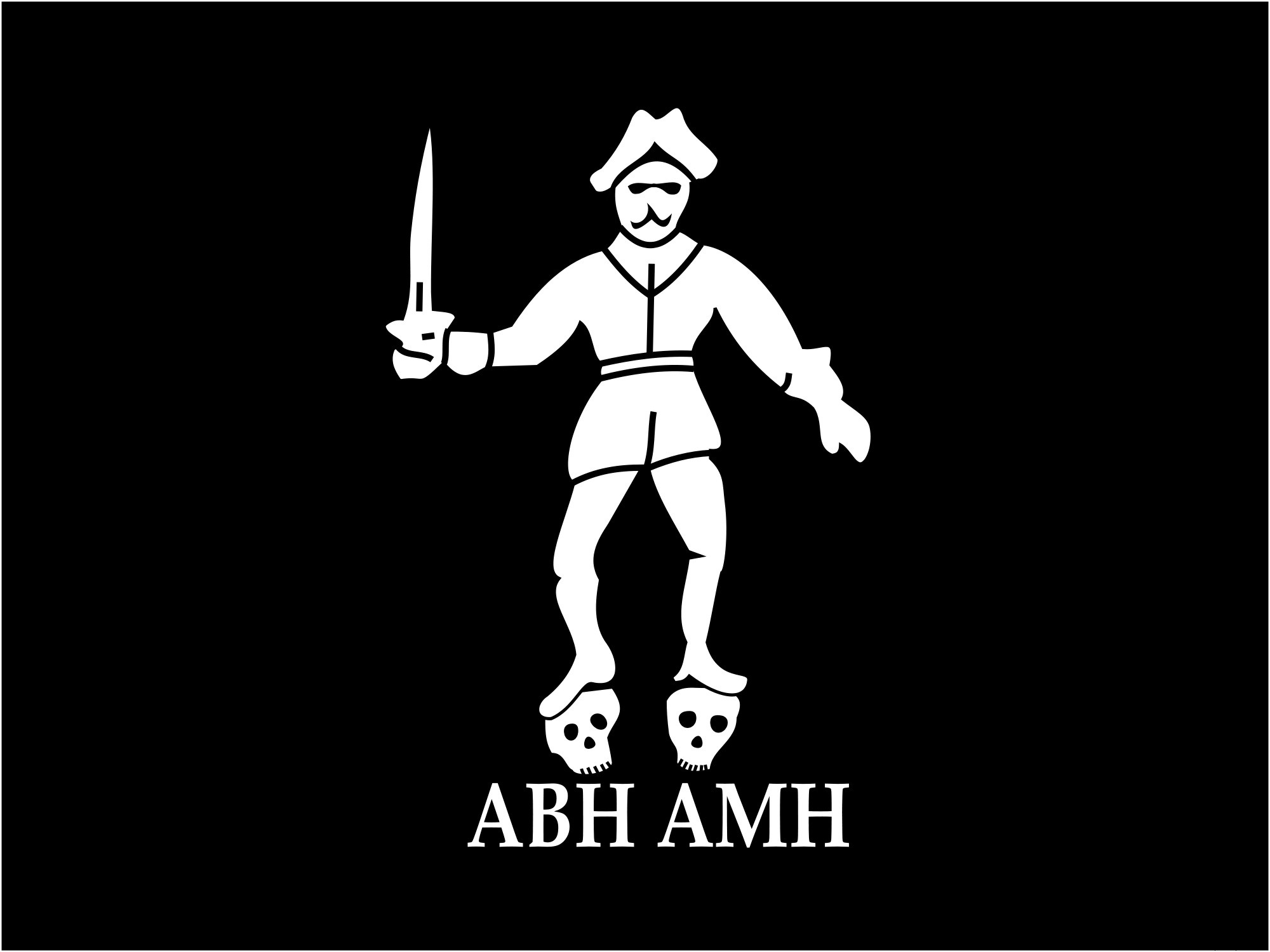
These are just a few examples of the flags of the best known pirates, or whose designs were more particular, however, there were as many flags as there were ships and captains sailing the seven seas. Also, many of them had different versions of their Jolly Roger , in the same way that, on occasion, they raised the flags of some countries, both to go unnoticed and to deceive their unsuspecting victims.
